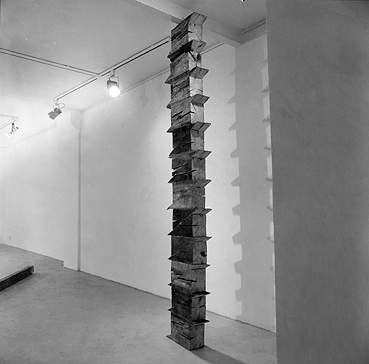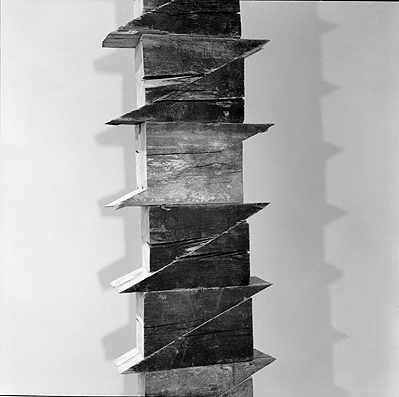 |
|
 |
|
colonne
Une poutre est coupée en x tronçons égaux. Chaque morceau est coupé à son tour dans sa diagonale. Les deux morceaux posés l'un sur l'autre forment un jeu de cales qui peuvent glisser l'un sur l'autre en suivant la ligne de coupe et en s'élevant en hauteur, tout en conservant un parallélisme entre les deux faces (voir photo de détail en bas de la fenêtre). Ce principe de cales complémentaires est utilisé en construction depuis l'Antiquité. Ici, les cales sont empilées l'une sur l'autre formant une colonne qui est calée entre le sol et le plafond.
column
I cut a beam into some equal segments. Each piece of it is also cut through its diagonal. The two portions are put together so that they form a set of wedges which can shift together as they follow the cutting line and they vertically rise. But they always keep a parallelism between the two faces (seethe detailed picture down the window). This principle of complementary wedges was used for buildings since Antiquity. Here, the wedges are stacked and they form a kond of column which is wedged between floor and ceiling.
Stéphane Lallemand
constructions 1986 1988
 |
|
 |
|